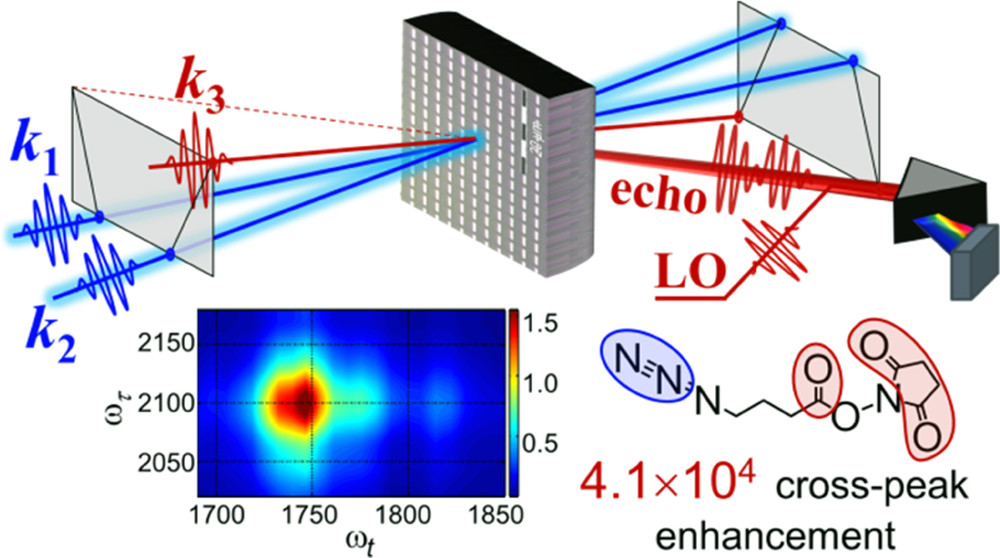The development of spectroscopic approaches to study molecules at interfaces is important as the molecular properties often differ from those in the bulk. Implementation of surface-enhanced two-dimensional infrared (SE 2DIR) spectroscopy using lithographically fabricated plasmonic nanoarrays is demonstrated for nanometer thick films. The sample, 4-azidobutyrate-N-hydroxysuccinimide ester (azNHS), dispersed in polystyrene was deposited onto the nanoarray. Raw enhancements in the SE 2DIR spectra exceeding 5 × 104 and 1.3 × 103 fold were achieved for the CO and NN peaks, respectively. The field enhancement provided by the nanoarray was sufficient to record cross-peaks in 1 nm thick samples under dilute conditions for azNHS (∼0.1 M). Note that the cross-peaks were recorded for vibrational modes frequency separated by ∼350 cm–1 with the enhancement factor of 4.1 × 104. The effective electric field enhancement factors, measured for NN and CO modes via linear and two nonlinear IR techniques, have similar sample-thickness dependences, which permit using linear spectroscopy for enhancement evaluation. High-quality cross-peak waiting-time dependences were recorded for samples as thin as 1 nm involving several IR reporters demonstrating the applicability of an arsenal of 2DIR approaches, including spectral diffusion, chemical exchange, and relaxation-assisted 2DIR, to interrogate samples in nanometer thick films. The study opens new opportunities in analyzing structures and dynamics of molecules at interfaces.
Authors: Robert T Mackin, Bar Cohn, Andrey Gandman, Joel D Leger, Lev Chuntonov, Igor V Rubtsov
Publication date: 2018/4/27
Journal: The Journal of Physical Chemistry C
Volume: 122
Issue: 20
Pages: 11015-11023
Publisher: American Chemical Society



